ERE Research has arrived in Australia with a considerable range of cycling products. The 28mm tubeless-ready Genus CCX tyres are well worth having a look at. Light, fast, and with surprisingly supple road feel they have got me thinking about tyre selection… again.
Product Review by Rob Arnold
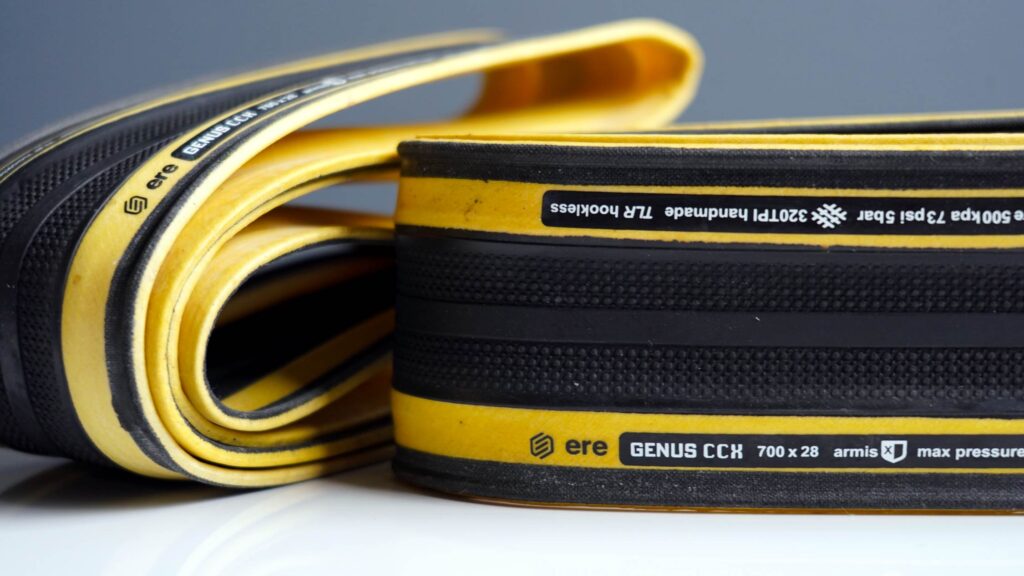
It took only a few kilometres for me to reach a conclusion about a tyre swap that I was originally hesitant to do. The ERE Research Genus CCX tyres, 28mm with tan sidewalls, are fantastic! Faster with less effort, certainly in a straight line. That was an early thought, but it took a bit longer before I would test the cornering of these light tyres.
These tyres are not direction-specific. There is a 7mm centre ridge, with tiny nodules of rubber extending around 10mm on each side. It’s a different style to what I’ve become accustomed to in recent years and while I was immediately happy with the sensations, a question remained. How would they cope when leaning into corners at speed?
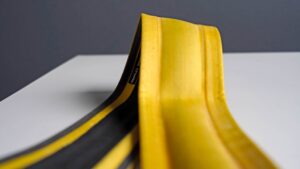
It’s important that you understand the kind of grip you have before taking any risks but the adjustment period didn’t last long. By the time I began descending a familiar hill on dry roads I felt there was enough control – and no obvious quirks from the rubber and tread – to increase my speed.
Considering it’s a narrower tyre than I’ve been used to with slightly more pressure than other tubeless set-ups I’ve had, I was hyper aware of the sensations and willing to back off the pace if it felt like they weren’t grabbing the road appropriately. Instead of going slower, however, I speed increased and by the bottom of that first hill I was sold.
The early conclusion: these tyres are fast! They are also light and, as they are part of a bike’s rotating mass, the weight savings are more relevant.
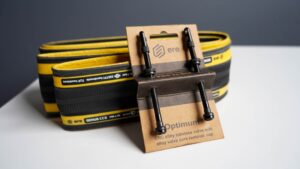
ERE Research is new to Australia in 2024 and the range includes tyres, tubeless valves (pictured) as well as saddles and plenty of other components.
Shaving around 40-50g from each wheel (in comparison to the Goodyear Eagle F1, 32mm that I had been riding) is significant – more than a placebo, it was noticeable how much easier it was to get up to speed.
The early sensations were good and things only got better the longer I rode with the tyres from ERE Research.
With sealant (not tubes), the comfort factor is also a discussion point. When you swap from one tyre to the next you can feel the difference in feedback. Ideally, during a test like this, the less time between riding one and another product, the better. So, for the maiden ride with the Genus CCX I went to the same place (in similar conditions, ie. dry) as the day before.
My times were faster. And my view on wider tyres and low pressure started to become blurred.
For a few years my commentary on road cycling tyres has been to go tubeless, with wider tyres and lower pressures. If you do, I’ve been saying, you get a more controlled ride and less feedback through the wheels, and therefore a more comfortable ride.
But now? Well, let me just say that I’m happy to have begun the experiment that I wasn’t sure I wanted to do. These tyres are absolutely worth trying!
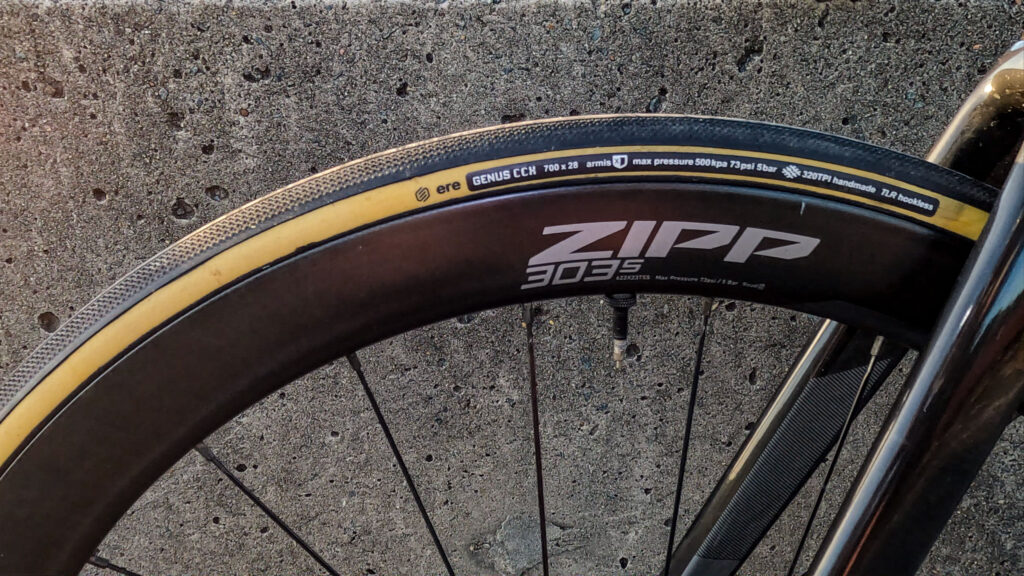
Getting started with ERE Research
It began with a little reluctance. Why change when I’m comfortable with what I’ve been using? It has taken a few years of experimentation and plenty of tyre changes – everything from different brands, compounds, and sizes – for me to realise that cycling tyres have improved dramatically recently.
Furthermore, I went tubeless about five years ago and although it’s not always hassle-free riding, that is now my preference for road tyres. Most of the time I’m able to do the fitting myself, even without an air-compressor (as fitting is much easier now, a stark contrast to around 10 years ago when tubeless started coming to road cycling), but there have also been a few trips to a professional workshop for a little extra assistance.
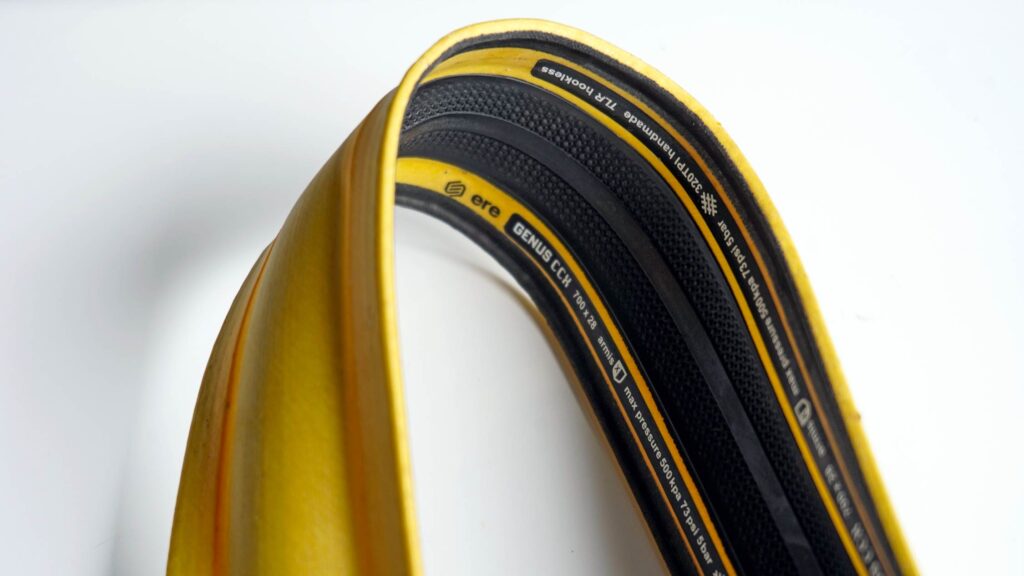
Eventually I made yet another change, quite a dramatic one in fact. From 32mm Goodyear Eagle F1 (tyres I’ve used in various iterations and three sizes: 25mm, 28mm and 32mm, black and tan sidewalls) to what’s a relatively new arrival in Australia: ERE Research’s Genus CCX tyres (RRP AUD$135*).
The hesitation to change was largely because of sizing issues. I’ve been singing the praise of 32mm, tubeless, and low-pressure for comfort and control, so why would I swap to 28mm and a brand I knew little about?
“Try them and let me know what you think,” said Matt Hodges, a rep from the local agent, De Grandi Cycle and Sport.
A short while later a text was sent to Matt with my first comments. “You owe me a few hours mate,” I wrote. “That was a right-royal wrestle!”
Getting the 28mm tan sidewall Genus CCX onto Zipp 303s rims was quite a challenge. Tight is an understatement but with persistence you’ll eventually get there. Then comes the next challenge: getting them to seat.
Without an air-compressor it can go one of two ways: good or bad. Fitting the tyres for my review went both. Front tyre? No worries. Air goes in, tyres expand, appropriate noises emanate, and satisfied smile appears. Rear tyre? Not so lucky. So… off to Tune Cycles for some help with an air-compressor. With a re-tape on the rim and some extra measures (ie. Silca Ultimate, with little shards of carbon-fibre in the mix) it was time to ride.
Steady at first but, as I’ve said earlier, fast from the start. And easier to get up to speed than with the Goodyear 32mm arrangement. With 62psi in front and rear for the new ERE tyres, after riding low 50s with the bigger bag tyres, it is indeed a snappier sensation on the bike. You feel the road more, but it’s not uncomfortable as some 28mm might be with the same wheel/pressure arrangement.
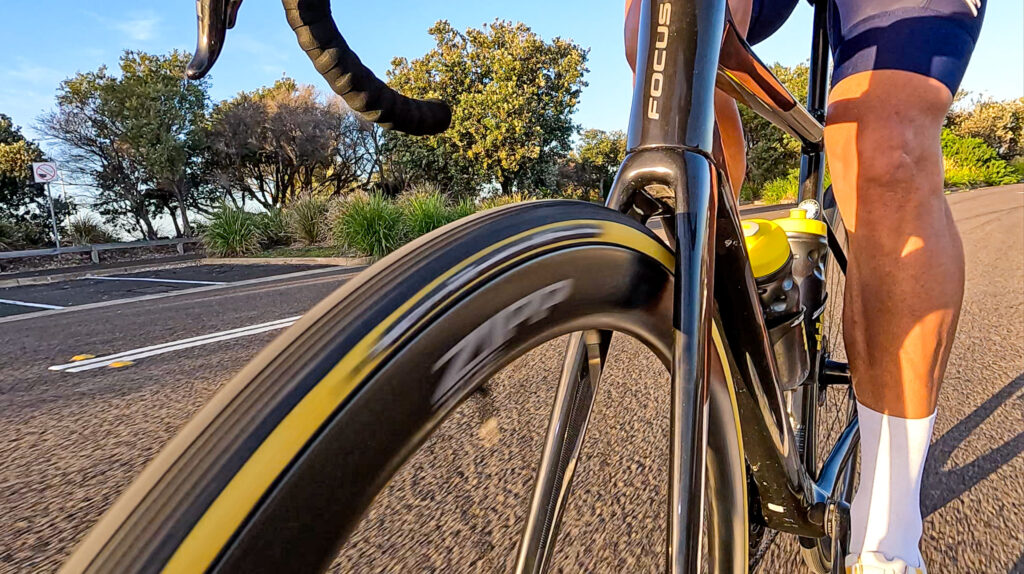
Tyres and ‘Comfort’
Cycling’s infatuation with tyres isn’t new. Although, for a while, there seemed to be variations of a rather similar theme from most brands. The arrival of disc brakes and different possibilities of modern materials has sparked a revolution for road bike tyres.
Pirelli, Goodyear, and Continental – all big players in the motoring industry – have all dramatically improved their cycling offerings, many largely in the time that tubeless has become more popular.
I’ve ridden tyres from those three brands and, each with direction specific treads, compounds that vary dramatically. With the change to tubeless comes the requisite rethink on tyre pressures, and it has become so specific that all the major players – and even smaller tyre manufacturers – offer suggested pressure based on all kinds of preferences offered online (and in apps).
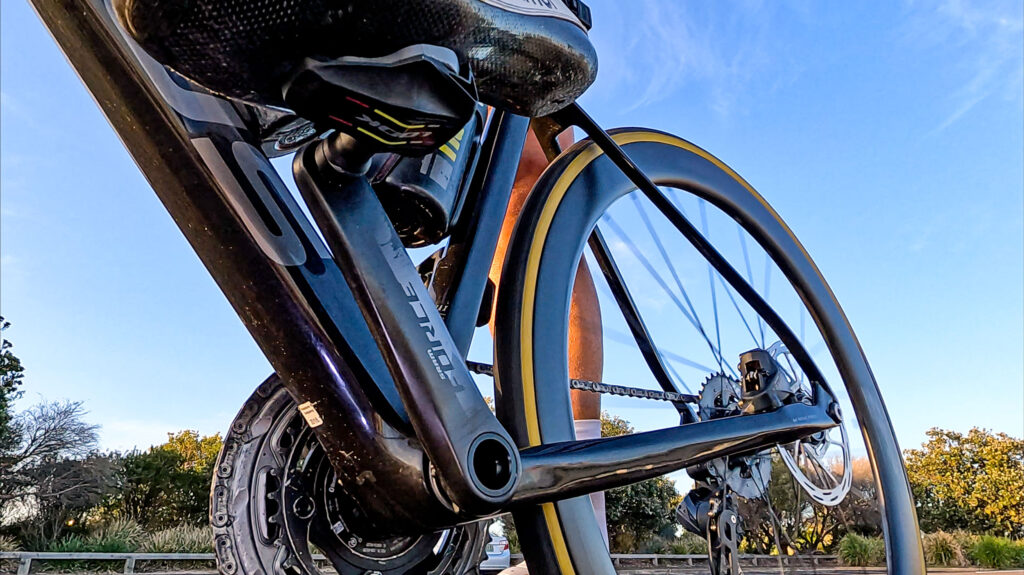
My riding weight is now closer to 70kg than 60, as it was when I started with tubeless. And because of this fluctuation, and frequent swapping of tyres, I consult the charts quite often and am aware of what most recommendations are for a range of weights (and other considerations: rim selection, conditions of the road and weather… etc).
Through it all, I’ve found the wider / lower pressure combo best for the cycling I do. There is no need, per se, for speed. But if I can go faster with less effort, great. For me, the control of 32mm (or 30mm, which also has lower pressure suggestions) has been perfect. I feel in control and can ride longer without feeling rattled, certainly when I consider the bikes I’ve ridden with high-pressure tyres over long distances before.
A fabulous column by Davern White about Tyre Voodoo I published years ago still makes me grin. It talks about various ways to get the best out of your rubber.
“These tyres are too young son. They need to ‘cure’ first.”
“Cure?”
“Yeah, you need to let ’em harden up and mature.”
I could go on, in different ways to how Davern speaks, and about a different kind of style. But still, there needs to be some ‘feel’ in the tyres, something that makes them special. You may call it ‘supple’. Or it could be ‘direct’. There are options but finding a word to explain that one tyre is ‘better’ than another is difficult.
Still, when you go from one that does the job well and ticks all the boxes on your requirement list (and has managed to remain puncture-free on all manner of roads for months), to something that goes fast so easily and ‘feels’ so good, you notice it.
That’s my long way of saying, the ERE Research experiment was a most enjoyable one. It not only offered hours of happy riding but also got me thinking about going narrower again.
– By Rob Arnold
*Pricing information correct as of April 2024.

